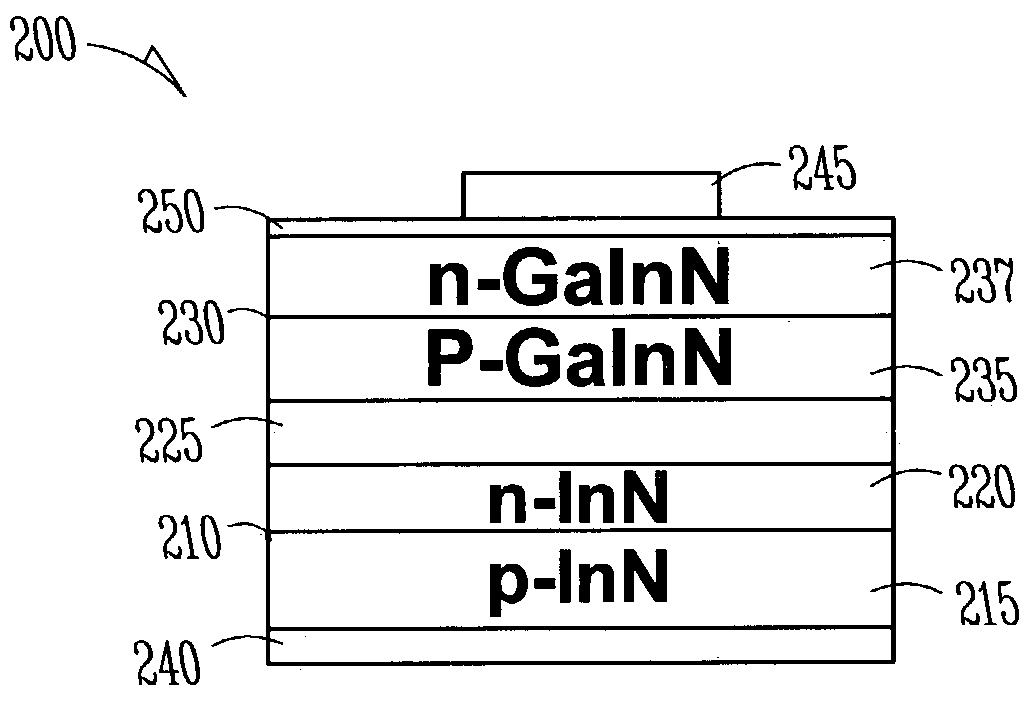Broad spectrum solar cell
a solar cell and broad-spectrum technology, applied in the field of solar cells, can solve the problems of reducing efficiency, reducing and reducing the efficiency of solar energy conversion, so as to improve the utilization rate of solar energy spectrum
- Summary
- Abstract
- Description
- Claims
- Application Information
AI Technical Summary
Benefits of technology
Problems solved by technology
Method used
Image
Examples
Embodiment Construction
[0017]In the following description, reference is made to the accompanying drawings that form a part hereof, and in which is shown by way of illustration specific embodiments in which the invention may be practiced. These embodiments are described in sufficient detail to enable those skilled in the art to practice the invention, and it is to be understood that other embodiments may be utilized and that structural, logical and electrical changes may be made without departing from the scope of the present invention. The following description is, therefore, not to be taken in a limited sense, and the scope of the present invention is defined by the appended claims.
[0018]A block diagram abstract representation of a multi-junction solar cell is shown generally at 100 in FIG. 1. Three junctions, top, middle and bottom are shown at 110, 115, and 120. Each junction has a different bandgap, such that they absorb different energies of light. Light in the form of photons is represented by arrow...
PUM
| Property | Measurement | Unit |
|---|---|---|
| energy bandgap | aaaaa | aaaaa |
| energy bandgap | aaaaa | aaaaa |
| energy bandgap | aaaaa | aaaaa |
Abstract
Description
Claims
Application Information
 Login to View More
Login to View More - R&D
- Intellectual Property
- Life Sciences
- Materials
- Tech Scout
- Unparalleled Data Quality
- Higher Quality Content
- 60% Fewer Hallucinations
Browse by: Latest US Patents, China's latest patents, Technical Efficacy Thesaurus, Application Domain, Technology Topic, Popular Technical Reports.
© 2025 PatSnap. All rights reserved.Legal|Privacy policy|Modern Slavery Act Transparency Statement|Sitemap|About US| Contact US: help@patsnap.com



